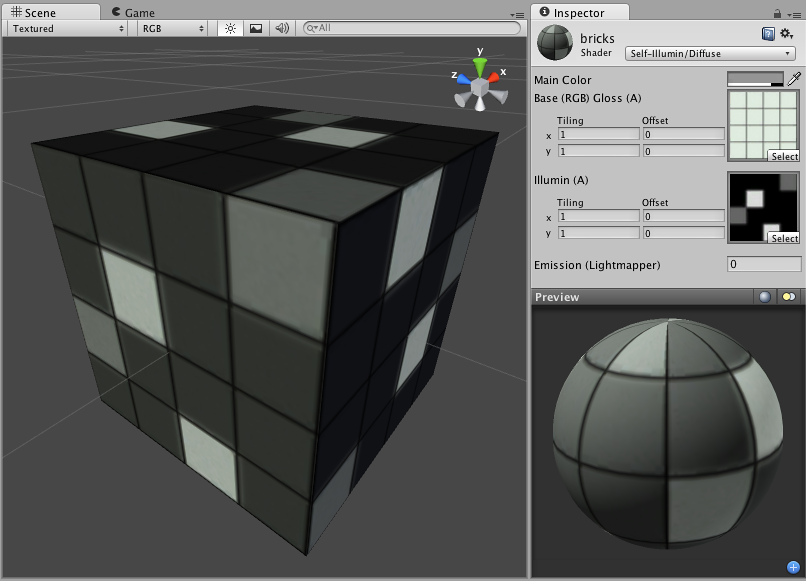Self-Illuminated Diffuse
Note. Unity 5 introduced the Standard ShaderA built-in shader for rendering real-world objects such as stone, wood, glass, plastic and metal. Supports a wide range of shader types and combinations. More info
See in Glossary which replaces this shaderA small script that contains the mathematical calculations and algorithms for calculating the Color of each pixel rendered, based on the lighting input and the Material configuration. More info
See in Glossary.

Self-Illuminated Properties
Note. Unity 5 introduced the Standard Shader which replaces this shader.
This shader allows you to define bright and dark parts of the object. The alpha channel of a secondary texture will define areas of the object that “emit” light by themselves, even when no light is shining on it. In the alpha channel, black is zero light, and white is full light emitted by the object. Any sceneA Scene contains the environments and menus of your game. Think of each unique Scene file as a unique level. In each Scene, you place your environments, obstacles, and decorations, essentially designing and building your game in pieces. More info
See in Glossary lights will add illumination on top of the shader’s illumination. So even if your object does not emit any light by itself, it will still be lit by lights in your scene.
Diffuse Properties
Diffuse computes a simple (Lambertian) lighting model. The lighting on the surface decreases as the angle between it and the light decreases. The lighting depends only on this angle, and does not change as the cameraA component which creates an image of a particular viewpoint in your scene. The output is either drawn to the screen or captured as a texture. More info
See in Glossary moves or rotates around.
Performance
Generally, this shader is cheap to render. For more details, please view the Shader Peformance page.